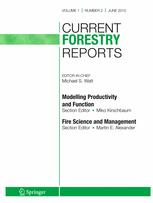Article by Gardner, Han, Wang featured in June 2015 Current Forestry Reports

An article titled, “Wood–Plastic Composite Technology,” authored by Dr. Douglas Gardner, Dr. Yousoo Han, and graduate student Lu Wang, has been published in the June 2015 Current Forestry Reports. This article is part of the Topical Collection on Wood Structure and Function.
Click to view the article, here.
The abstract reads:
“Wood–plastic composites (WPCs) are a form of composite combining wood-based elements with polymers. The processes for manufacturing WPCs include extrusion, injection molding, and compression molding or thermoforming (pressing). Newer manufacturing processes for WPCs include additive manufacturing via fused layer modeling and laser sintering. An important constraint for polymers used in WPCs is requiring process conditions (melt temperature, pressure) that will not thermally degrade the wood filler. Wood degrades around 220 °C; thus, general-purpose polymers like polyethylene and poly vinyl chloride are typically used for manufacturing WPCs. Wood fibers are inherently hydrophilic because of the hydroxyl groups contained in the cellulose and hemicellulose molecular chains. Thus, modification of the wood fiber via chemical or physical treatments is very critical to making improved WPCs. The most abundant profiles made from wood–plastic composites are boards or lumber used in outdoor decking applications. Although early WPC products were mainly extruded for profiled sections, nowadays, many injected parts made of WPC are being introduced for various industries, including electrical casings, packaging, daily living supplies, and civil engineering applications. Mold and mildew and color fading of WPCs tend to be the durability issues of prime importance for WPCs. Most recent research on WPC durability focuses on studies to better understand the mechanisms contributing to various degradation issues as well as methods to improve durability. Most WPC products in the USA are utilized in building materials with few exceptions for residential and commercial building applications, which means that building codes are the most important national rules for the WPC manufacturers. New developments are being made especially in the area of nano additives for WPCs including nanocellulose. Recently, the trend of patent registrations for WPCs has shifted to new products or applications instead of the materials itself.”
Citation: Gardner, D. J., Han, Y., & Wang, L. (2015). Wood–Plastic Composite Technology. Current Forestry Reports, 1-12. DOI 10.1007/s40725-015-0016-6
